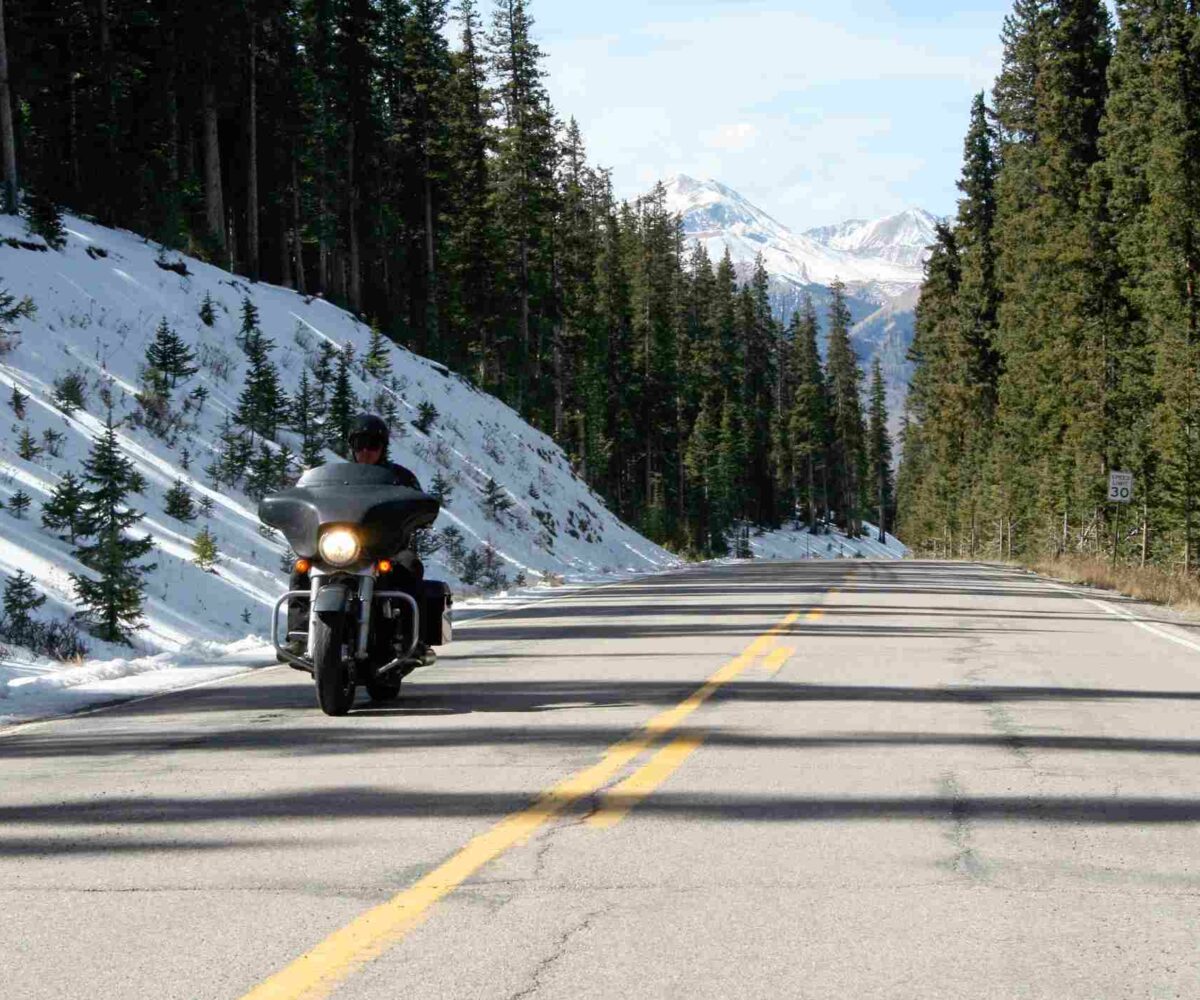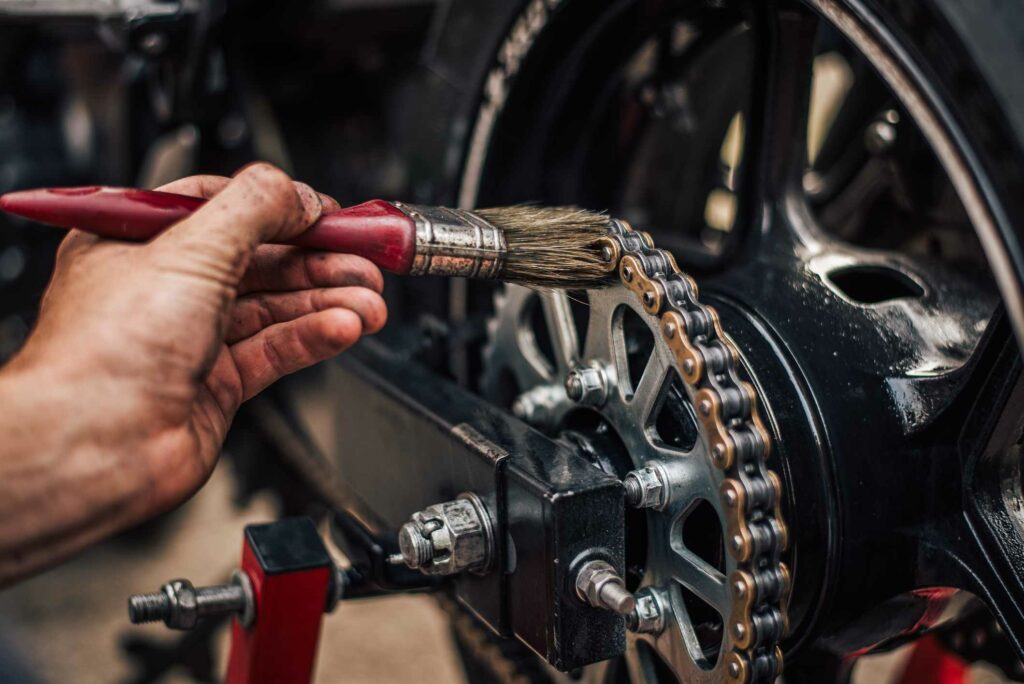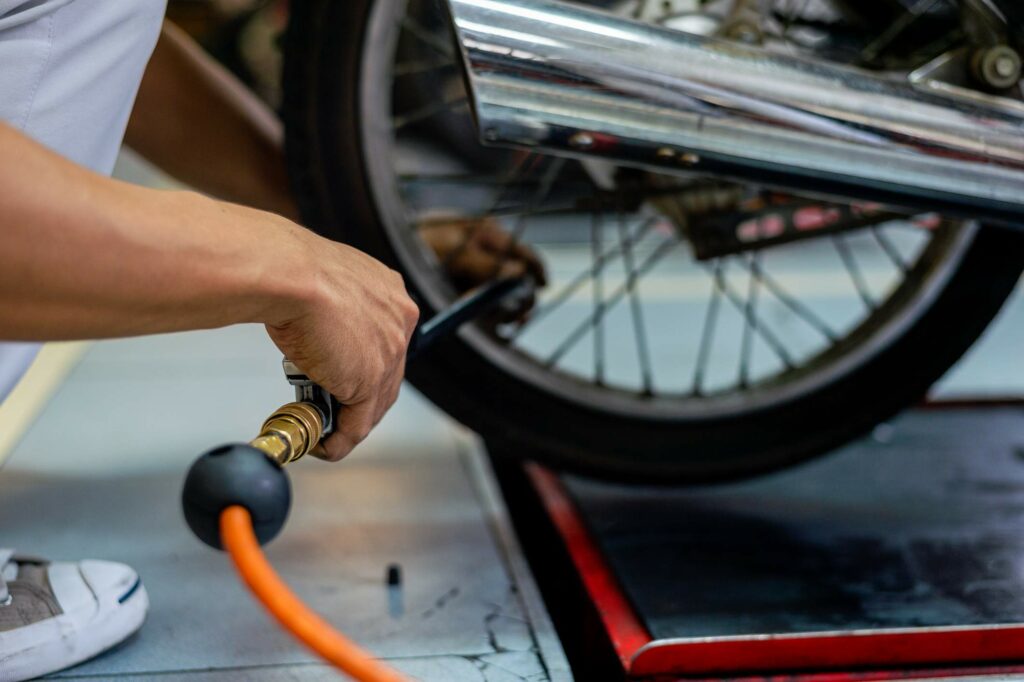10 Steps on Winterizing Your Motorcycle Before Taking it to Storage

While motorcycles are a fun and convenient way to get around during the temperate months of the year, many people do not wish to ride them around once the chill of winter comes. You could always just move your motorcycle into your garage or park it in the shed for the winter, but you may pull it out in the spring for the first ride only to realize it isn’t working properly. Your bike needs to be winterized before placing it in storage to keep it running correctly when you want to ride it again, so here are steps on how to winterize your motorcycle before storing it for the winter.
Service Your Motorcycle
Making sure your motorcycle is working properly before having it placed into winter storage is an important step in the process. This means changing the oil and filters, checking fluid levels, and changing tires, if necessary. You may be motorcycle-savvy enough to do this yourself from the comfort of your garage, but if you aren’t sure what needs to be looked at, take it to a service shop.
Your bike will be sitting for a long period of time, so you want to make sure that everything is working as it should before putting it in storage. If you suspect any issues with your motorcycle, it is important to have them taken care of before you let it sit for months on end.
Clean Your Motorcycle
Allowing bugs, dirt, and general grime build-up to sit on your bike while storing your motorcycle can affect your bike. Not only will they become set in and be more difficult to remove, but they could also cause irreparable damage to the paint and polish on your motorcycle. Make sure everything is cleaned well and completely dry before putting your hog into winter storage.
Wax and Polish
Waxing your painted parts and applying WD-40 to all exposed metal can keep your motorcycle from rusting if it happens to get exposed to water or humidity in your storage place. You also want to seal any leather parts of the vehicle with a dressing to ensure the elements will not affect the leather by causing creases or slowly eating away the leather.

Lubricate Moving Parts
Things that are meant to move constantly will sit still for a long time when you start storing motorcycles for the winter. To avoid corrosion, you want to make sure all moving parts of your bike are well-lubricated before packing it away. This includes all cables, drive chains, controls, and pivot points on your bike. Pro tip: take your motorcycle for a short ride before applying the lubrication to warm up everything, so your bike absorbs the solution better.
Care for Your Carburetor
Not all motorcycles have a carburetor, but if yours does, you need to make sure it is also cared for before placing it in storage. You want to turn your gas petcock off before starting this process. If you aren’t sure how to do that, check your owner’s manual. Once that is off, you will drain any access gas from the carburetor bowls. You should also be able to find the location of the drain screws in your owner’s manual. If you have a fuel-injected motorcycle, you will skip this step.
Stabilize Your Fuel
The gas that is currently in your motorcycle’s tank will go bad while it sits in storage. You could drain your gas tank, but that is entirely unnecessary in today’s day and age. A good way to warm up your motorcycle before adding lubricant and kill two birds with one stone is to drive to a local gas station. There, you will want to fill your tank around 90% of the way then add in a fuel stabilizer. The mixing that will occur on your way home should be enough to keep your fuel from going bad in the winter. Make sure you care for your carburetor before stabilizing your fuel.
Charge or Remove Your Battery
Letting your motorcycle sit for a long time will likely result in a dead battery, especially if it is stored somewhere that sulfates can build up on the plates. There are two things you can do to prevent this from happening. The first is to purchase some sort of battery maintainer or trickle charger that will keep your battery charged without over-charging it and killing the battery. The second thing you can do is to take your battery out and keep it in a safe, dry space with vaseline on the terminals to prevent corrosion.
Plug Your Pipes
The last thing you want is to go to pull your motorcycle out in the spring to discover that it has become home to a host of rodents. While both cloth and steel wool are suggested as ways to plug up your pipes, you ideally want a heavy plastic that is secured by a rubber band or zip tie. This will protect important places like your muffler and airbox from becoming infested, especially when they are difficult to get to and clean out. If it is an exposed hole that a rodent can fit into, they will find their way into it, so make sure you cover everything.

Protect Your Tires
You need something to lift your bike slightly to keep from getting flat spots. You want to make sure your tires are properly filled with air if you didn’t replace them when you serviced your motorcycle. This should keep them from getting flat spots, but it is always good to lift your bike slightly. You can get track stands to prop your bike on that also help when it comes time to change the oil again. However, if your motorcycle has a center stand, you can just use that and not spend the extra cash.
Keep Your Bike in a Dry, Secure Place
Water will wreak havoc on all parts of your motorcycle from the metal to the leather. Keeping your bike inside and out of the elements is vital. If you are using a motorcycle shed or garage, make sure it is closed up nicely so no water can leak into it. Climate-controlled self-storage is a great place to store your bike. In a storage unit, you can also ensure your bike’s safety through the storage facility’s security measures and insurance.
Motorcycles are not cheap vehicles, so you want to do everything in your power to keep yours safe when you aren’t riding it in the winter. Storage units can be motorcycle storage solutions, but you are in charge of preparing your bike to sit there all winter — the above ten steps are all great steps to take in order to ensure that your bike survives the winter. If you are in need of a clean, quality storage space to stow your bike in, find a National Storage location near you today!